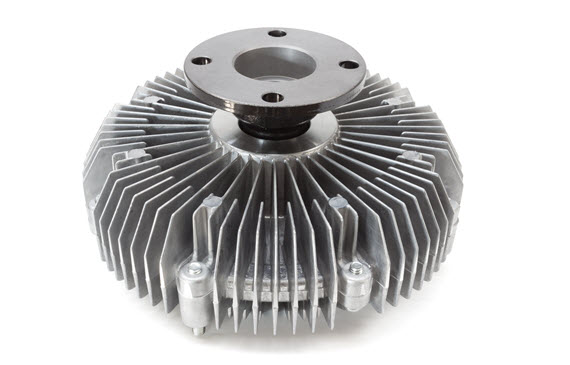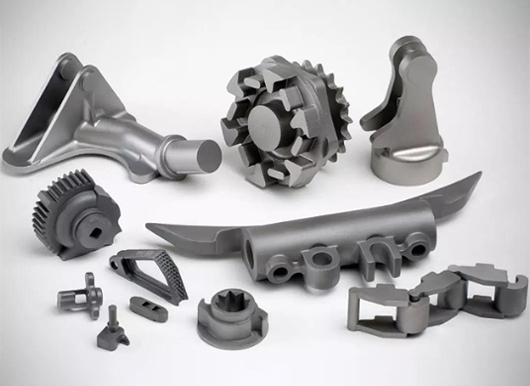Uncovering the Perks and Practical Use Light Weight Aluminum Castings in Today's Market
Light weight aluminum spreadings have come to be progressively relevant in different industries due to their one-of-a-kind features. Their light-weight nature and resistance to corrosion make them ideal for requiring applications. In addition, the remarkable strength-to-weight proportion provides considerable advantages in layout and production. As markets remain to explore their potential, the complete extent of aluminum spreadings' benefits and applications remains to be fully revealed. What lies in advance for this versatile product?
The Lightweight Benefit of Light Weight Aluminum Castings
Many materials are made use of in production, aluminum spreadings stand out mainly due to their light-weight properties. This characteristic makes light weight aluminum castings an appealing selection for different sectors, particularly in aerospace and vehicle applications, where weight reduction is necessary for enhancing fuel effectiveness and performance. The light-weight nature of light weight aluminum allows makers to create elements that are much easier to take care of and set up, eventually decreasing labor expenses.
The ability to produce complex forms without substantial weight charges enables developers to innovate while keeping structural integrity. Aluminum castings can properly replace larger products, leading to substantial financial savings in shipping and operational prices. Their light-weight advantage also adds to enhanced item long life, as lighter elements frequently cause minimized deterioration on machinery. Overall, the light-weight buildings of aluminum spreadings provide producers with an affordable side, promoting innovations in product layout and efficiency throughout different sectors.

Extraordinary Deterioration Resistance
Light weight aluminum spreadings possess a natural resistance to oxidation, which considerably enhances their durability in various settings. This intrinsic residential property not only adds to their resilience but likewise straightens with the light-weight benefit that aluminum offers. Because of this, light weight aluminum spreadings are increasingly acknowledged for their extraordinary deterioration resistance in numerous applications.

Normally Immune to Oxidation
Among the standout features of aluminum castings is their outstanding rust resistance, which originates from a natural oxidation procedure. When exposed to air, light weight aluminum responds to create a thin, safety layer of aluminum oxide. This layer acts as an obstacle against more oxidation and shields the underlying steel from harsh elements such as dampness and salts. Unlike other metals, this oxide layer is self-repairing; if harmed, it promptly reforms when revealed to air. This distinct residential or commercial property boosts the longevity of aluminum castings in various settings, making them perfect for applications in industries such as aerospace, vehicle, and marine. Subsequently, the all-natural resistance to oxidation significantly minimizes maintenance expenses and increases the integrity of aluminum spreadings popular problems.
Light-weight Sturdiness Benefit
The light-weight nature of aluminum spreadings adds considerably to their durability, making them a useful choice in different sectors. This exceptional durability is largely attributed to light weight aluminum's inherent resistance to corrosion, which is boosted additionally via anodizing and various other surface area therapies. Unlike many metals, aluminum does not corrosion; instead, it forms a protective oxide layer that shields it from environmental damages. This building is specifically beneficial in industries such as automotive and aerospace, where weight decrease is important without compromising toughness. Furthermore, the durability of light weight aluminum spreadings minimizes maintenance expenses and replacements, offering economic benefits gradually. Their lightweight toughness and deterioration resistance placement light weight aluminum spreadings as a superior product for modern manufacturing applications.

Superior Strength-to-Weight Ratio
An amazing attribute of light weight aluminum castings is their premium strength-to-weight proportion, that makes them very preferable in numerous applications. This inherent home permits light weight aluminum spreadings to stand up to substantial stress and anxiety while staying light-weight, an essential consider sectors such as aerospace, automotive, and production. Engineers frequently choose aluminum castings for parts that call for both sturdiness and minimized weight, improving fuel efficiency and performance.
The high strength-to-weight proportion additionally promotes the design of intricate forms and frameworks, making light weight aluminum spreadings flexible for facility applications. Moreover, the capability to maintain architectural honesty under tough conditions assurances longevity and reliability in items, from airplane frameworks to vehicle parts. This advantage adds to the growing fad of utilizing aluminum spreadings in innovative styles, inevitably resulting in improved functionality and performance across varied industries. The remarkable strength-to-weight ratio of aluminum castings places them as a pivotal product in modern engineering and production.
Cost-Effectiveness in Production
Cost-effectiveness in light weight aluminum casting manufacturing is primarily accomplished via decreased product waste and reliable production procedures. By enhancing layouts and utilizing sophisticated methods, manufacturers can lessen excess product use while maintaining high quality criteria. This method not just decreases production expenses but additionally contributes to a lot more lasting techniques within the industry.
Decreased Material Waste
Lowering material waste in aluminum casting processes significantly improves manufacturing performance. By maximizing the style and manufacturing methods, firms can minimize excess scrap and boost source usage. This reduction in waste not just lowers material expenses however likewise adds to an extra lasting manufacturing version. The capability to reuse light weight aluminum more supports cost-effectiveness, allowing producers to recover and reuse products without endangering top quality. As the sector significantly concentrates on sustainability, minimized material waste straightens with ecological objectives while all at once enhancing earnings. Inevitably, efficient use raw products enhances the competitive setting of services out there, making aluminum spreadings a desirable choice in different applications. The strategic approach to decreasing waste shows a commitment to both ecological and economic duty.
Effective Production Processes
While standard manufacturing procedures can incur substantial expenses, aluminum spreading provides a more effective option that improves total production productivity. This technique lessens material waste and enables exact control over the production procedure, leading to minimized labor and functional expenses. The capacity to create intricate shapes with less steps further streamlines manufacturing, adding to shorter lead times. Additionally, aluminum's light-weight nature and superb thermal conductivity enable energy savings during production and in the last application. By utilizing modern-day casting innovations, suppliers can achieve higher throughput without sacrificing high quality. Consequently, aluminum casting attracts attention as an economical option, making it an attractive option for businesses aiming to enhance their manufacturing processes in today's open market.
Versatility Across Industries
Aluminum castings demonstrate exceptional adaptability across different sectors, as they can be customized to fulfill details needs and applications. In the auto market, aluminum castings are used in engine blocks, transmission housings, and wheels, offering lightweight yet long lasting remedies that enhance fuel efficiency. The aerospace industry additionally benefits from light weight aluminum spreadings, utilizing them in structural components and engine components as a result of their strength-to-weight ratio.
In the customer products industry, producers employ aluminum castings for products varying from kitchenware to furnishings, offering both aesthetic allure and capability. The electronics sector utilizes light weight aluminum spreadings for housings and warmth sinks, guaranteeing effective thermal management. Furthermore, the building and construction sector leverages aluminum castings for architectural elements and architectural aspects, boosting longevity and layout adaptability. This wide applicability highlights aluminum spreadings as a vital resource, fulfilling the diverse demands of different markets while maintaining high performance and dependability.
Sustainability and Environmental Effect
As industries significantly prioritize lasting methods, aluminum castings arise as an eco-friendly choice as a result of their recyclability and low ecological impact. Aluminum is one of one of the most recycled materials internationally, with the ability to be repurposed several times without destruction of high quality. This characteristic greatly minimizes the need for basic materials and power intake connected with main light weight aluminum production, which is energy-intensive.
Furthermore, light weight aluminum spreadings add to lightweight layouts, resulting in sustain performance in transportation applications such as aerospace and auto markets. Their sturdiness and resistance to deterioration prolong item lifespans, better reducing waste and resource usage with time. Furthermore, numerous suppliers are embracing accountable sourcing and eco pleasant manufacturing methods, enhancing the sustainability of light weight aluminum casting processes. On the whole, light weight aluminum castings represent a useful solution for services intending to decrease their environmental effect while attaining performance and efficiency.
Advancements in Aluminum Casting Technologies
Current developments in light weight aluminum casting visit this page innovations have significantly enhanced the performance and high quality of production procedures. Advancements such as 3D printing and advanced mold-making strategies have actually enabled manufacturers to develop detailed styles with reduced product waste. This shift not just enhances the accuracy of actors components yet likewise reduces lead times, permitting fast prototyping and faster market entrance.
Moreover, the unification of advanced computer system simulations aids in predicting prospective defects during spreading, causing higher-quality results (Aluminum Foundry). The usage of light-weight alloys has likewise added to the advancement of more powerful, much more sturdy products, satisfying sectors varying from automobile to aerospace
Furthermore, automated spreading procedures have actually arised, lessening human mistake and raising production speed. Collectively, these advancements are transforming the aluminum spreading landscape, driving greater competition and sustainability in production. As industries remain to progress, these modern technologies will play a vital function in conference future needs for performance and quality.
Often Asked Concerns
Exactly How Do Light Weight Aluminum Castings Contrast to Various Other Metals in Regards To Thermal Conductivity?
Light weight aluminum spreadings show premium thermal conductivity contrasted to many steels, such as steel and iron - Aluminum Foundry. Their lightweight nature and reliable warmth circulation make them excellent for applications calling for reliable thermal monitoring in various industries
What Are the Common Problems Located in Aluminum Castings?
Usual issues in light weight aluminum spreadings consist of porosity, shrinking, inclusions, and surface irregularities. These issues frequently occur from improper air conditioning prices, poor mold and mildew style, or a knockout post contaminations, affecting the overall top quality and efficiency of the last item.
Can Light Weight Aluminum Castings Be Recycled, and Exactly how?
Aluminum spreadings can be reused efficiently. The process involves accumulating, melting, and changing the aluminum, which minimizes waste and preserves sources. This recycling adds to sustainability while preserving the product's buildings for future use.
What Are the Common Lead Times for Light Weight Aluminum Spreading Manufacturing?
Normally, lead times for light weight aluminum casting production array from 2 to 6 weeks, relying on elements such as complexity, tooling requirements, and production quantity. Performance can boost with well-known provider connections and enhanced manufacturing processes.
Just how Does the Surface Area Finish Affect Light Weight Aluminum Casting Efficiency?
The surface coating significantly impacts light weight aluminum spreading performance by affecting corrosion resistance, visual quality, and rubbing characteristics. A smoother surface improves longevity and performance, while a rougher texture can enhance attachment for succeeding finishes Get the facts or therapies.
Numerous products are used in manufacturing, light weight aluminum castings stand out primarily due to their lightweight buildings. When exposed to air, light weight aluminum responds to develop a slim, protective layer of aluminum oxide. Cost-effectiveness in light weight aluminum spreading manufacturing is mainly attained through minimized product waste and efficient manufacturing procedures. Decreasing product waste in aluminum casting processes substantially boosts production effectiveness. Inevitably, effective usage of raw products reinforces the affordable position of businesses in the market, making light weight aluminum spreadings a desirable choice in different applications.